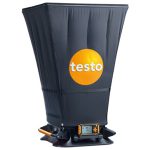In Australia, the food processing sector accounts for 24 per cent of total manufacturing employment, according to the Department of Industry. This doesn’t include the farmers, restaurants and supermarkets which participate in the production and distribution of food.
Delivering edible goods from Point A to Point B is a complex process, involving a network of farmers, processors, packers, distributors and retail businesses. This intricacy introduces various hazards, which is why many companies use instruments such as cooking oil testers to ensure consumer health.
Knowing which measurements to take starts with adhering to Australian laws and best practices. Hazard Analysis Critical Control Point (HACCP) is an administrative system that dictates how companies can assess and control various hazards associated with the food industry.
Train your employees on #HACCP: http://t.co/TOhORpSdB9. #FoodSafety pic.twitter.com/bwGsoMD8Mh
— StateFoodSafety.com (@statefoodsafety) October 15, 2015
An overview of HACCP
By implementing HACCP’s principles into a company’s operations, it can scrutinise and manage biological, chemical and physical risks inherent in handling, manufacturing, distributing and consuming food products. According to the US Food and Drug Administration (FDA), HACCP advises businesses to follow seven principles:
- Carry out a hazard analysis
- Identify the critical control points
- Establish critical limits
- Develop monitoring procedures
- Implement corrective actions
- Create verification procedures
- Set up accounting and documentation protocols
These principles can apply to different sub-sectors. For example, a restaurant or produce packaging company can follow each step to ensure the products they sell to their customers are safe to consume.
Why is HACCP necessary?
Although HACCP is a voluntary set of processes, HACCP Australia recognised such programmes as “common place” and “a pre-requisite to supply in most international markets”. In other words, the standard enables companies to keep suppliers in check.
 Ensuring your food is served in a clean environment is imperative.
Ensuring your food is served in a clean environment is imperative.From the perspective of a restaurant owner who is knowledgeable of the food sector, he or she may be hesitant to purchase produce, meats and other products from suppliers who do not apply HACCP’s principles. In contrast, he or she knows there are fewer risks associated with procuring goods from a supplier that recognises HACCP.
Expanding on the hypothetical restaurant, HACCP enables the owner to identify potential sources of food poisoning and implement ways to eliminate such hazards. Whether those risks be bacterial (i.e. Salmonella, E. coli) or viral (norovirus, rotavirus), the restaurant proprietor can address them.
Cooking instruments, such as those that measure food temperatures, provide chefs with the information they need to determine whether certain meats are ready to be served. Heat kills many of the pathogens health inspectors assess when visiting restaurants.
Although it may not be signed into law, following HACCP will benefit any business participating in the food sector.









 Reduce cooking oil costs while ensuring quality
Reduce cooking oil costs while ensuring quality Expert knowledge on CO2 monitoring
Expert knowledge on CO2 monitoring Refrigeration knowledge - in 3 modules
Refrigeration knowledge - in 3 modules



